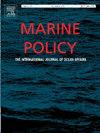将南南三方合作方法应用于能力建设:弥合技术差距并支持柬埔寨的可持续海水养殖
IF 3.7
2区 社会学
Q2 ENVIRONMENTAL STUDIES
引用次数: 0
摘要
虽然大部分水产养殖生产来自全球南方国家,但农业研究促进发展活动主要由全球北方国家资助。尽管全球北方的捐助者和全球南方的受益者之间存在公认的技术差距,这往往限制了干预措施的采用。在本文中,我们评估了柬埔寨、印度尼西亚和澳大利亚之间的南南三角合作(SSTC)项目的成果。关键合作伙伴(印度尼西亚)利用南南合作方法,向柬埔寨(受益伙伴)研究人员提供了与鳍鱼海水养殖有关的研究和开发方法方面的培训,特别是种子生产、鱼类营养和饲料开发、疾病诊断和鱼类健康方面的培训,由促进合作伙伴(澳大利亚)提供资金和总体项目管理。17名柬埔寨受益伙伴工作人员(6名女性,11名男性)成功完成了培训,另有12名工作人员(4名女性,8名男性)接受了价值链分析方法的培训。我们从技术和非技术方面对培训成果进行了评估,包括对受训人员的共同利益以及对国家创新体系和柬埔寨可持续发展目标(sdg)的更广泛贡献。培训的成果有助于提高柬埔寨鳍鱼海水养殖的可持续性,方法是:增加当地生产的鳍鱼种料的供应,确定当地可获得的水产饲料成分,以及改善对养殖者的鱼类健康支助服务。受益伙伴还认为,该项目有助于实现柬埔寨的六项可持续发展目标。总体而言,该项目表明,SSTC是一种有效的研发能力建设机制,关键伙伴国可以借此弥合受益国和促进伙伴国之间的技术差距。本文章由计算机程序翻译,如有差异,请以英文原文为准。
Applying a South-South Triangular Cooperation approach to capacity building: Bridging technological gaps and supporting sustainable mariculture in Cambodia
Although the bulk of aquaculture production originates from countries of the Global South, agricultural research-for-development activities are primarily funded by countries of the Global North. This is despite recognised technology gaps between Global North donors and Global South beneficiaries that often limit adoption of interventions. In this paper we evaluate the outcomes of a South-South Triangular Cooperation (SSTC) project between Cambodia, Indonesia and Australia. Using the SSTC approach, the pivotal partners (Indonesia) provided training to Cambodian (beneficiary partner) researchers in research and development methodologies related to finfish mariculture, specifically seedstock production, fish nutrition and feed development, and disease diagnostics and fish health, with funding and overall project management provided by the facilitating partner (Australia). Seventeen Cambodian beneficiary partner staff (6 female, 11 male) successfully completed this training, while another 12 staff (4 female, 8 male) were trained in value chain analysis methods. We evaluated training outcomes in terms of technical and non-technical co-benefits to trainees and broader contributions to national innovation systems and the Sustainable Development Goals (SDGs) for Cambodia. Outcomes from the training contributed to improved sustainability for finfish mariculture in Cambodia through: increased availability of locally produced marine finfish seedstock, identification of locally available aquafeed ingredients, and improved fish health support services for farmers. The project was also perceived by the beneficiary partners as contributing to six SDGs for Cambodia. Overall, the project demonstrated that SSTC is a useful mechanism for building capacity in research and development, whereby a pivotal partner country can bridge technology gaps between beneficiary and facilitating partner countries.
求助全文
通过发布文献求助,成功后即可免费获取论文全文。
去求助
来源期刊

Marine Policy
Multiple-
CiteScore
7.60
自引率
13.20%
发文量
428
期刊介绍:
Marine Policy is the leading journal of ocean policy studies. It offers researchers, analysts and policy makers a unique combination of analyses in the principal social science disciplines relevant to the formulation of marine policy. Major articles are contributed by specialists in marine affairs, including marine economists and marine resource managers, political scientists, marine scientists, international lawyers, geographers and anthropologists. Drawing on their expertise and research, the journal covers: international, regional and national marine policies; institutional arrangements for the management and regulation of marine activities, including fisheries and shipping; conflict resolution; marine pollution and environment; conservation and use of marine resources. Regular features of Marine Policy include research reports, conference reports and reports on current developments to keep readers up-to-date with the latest developments and research in ocean affairs.
 求助内容:
求助内容: 应助结果提醒方式:
应助结果提醒方式:


